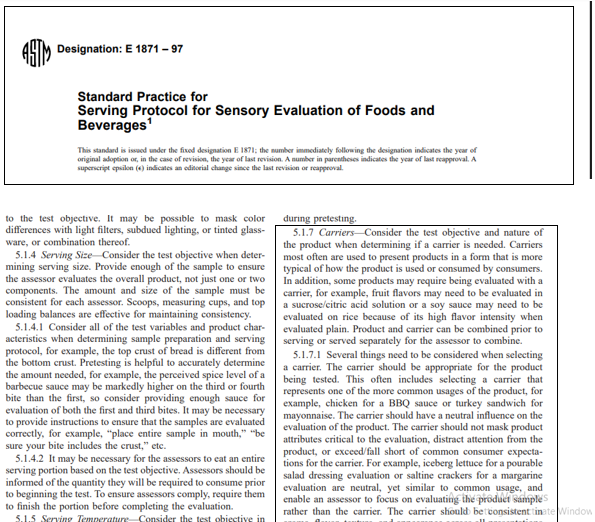Carriers in Sensory Evaluation
Regulations
Nutraceuticals Regulations FSSAI
Interesting Topics
What Are “Carriers” in Sensory Evaluation, and Why Do They Matter?
Table of Content
- 1. Carrier in Sensory Testing
- 2. Overages needed in functional or fortified food products
- 3. Standard permissible overages as per regulation
- 4. Permissible/permitted limit in the food formulation
- 5. Amino acids and nucleotides
- 6. Commonly permitted amino acids and their derivatives
- 7. Nucleotides are permitted in functional food and beverage
- 8. Scientifically justifying higher overages
- 9. FRL support the formulation of amino-acid- and nucleotide
What is a “carrier” in sensory testing, and when should it be used?
A carrier means a neutral food or base that is helpful for presenting a test product in a way that imitates real-life consumption. The evaluation must be done under normal consumption rather than in isolation unless that is the specified test objective.
Why are carriers used?
- For Actual Usage: Many products, sauces, jams, spreads, etc. are not usually consumed on their own. For example, using something that uses bread, rice or crackers becomes a realistic memory of consuming to replicate.
- To Intensity Manage: Some of the products, notably soy sauce or a vinegar dressing, when used as a dry item; the flavor of the product absorbs into these individually. The carrier is where one gets a balance.
- To avoid bias: Carriers help ensure that the product is fairly assessed without reservation by losing out on or masking some essential characteristics.
What makes a good carrier?
According to ASTM standards, a proper carrier should:
- Be typical for how the product is used, such as lettuce for salad dressing; rice for soy sauce; or bread for spreads
- Have neutral aroma, flavor, and texture so that it does not distract from the sample
- Be consistent across all samples in form, taste, and appearance
- Not mask, enhance, or distort key attributes under test
Should all samples be tested with carriers?
Not so. Pre-testing with and without a carrier is highly recommended as follows:
- Whether the product behaves differently when consumed alone versus with a carrier.
- If assessors are better able to distinguish between samples in one condition over the other
[Reference: ASTM International. (2008). Standard Guide for Sensory Evaluation of Beverages (ASTM E1871 – 95(2008)) (See Section 5.1.7).]
Examples of Carrier Usage:
Product | Suggested Carrier |
BBQ Sauce | Grilled chicken |
Soy Sauce | Plain rice |
Margarine | Saltine crackers |
Salad Dressing | Iceberg lettuce |
Chocolate Syrup | Vanilla ice cream |
Cereal | Milk (for end-use testing) |
Example:
Testing soy sauce by itself might lead to statements of too salty or too strong. But when tested on, say, plain rice, which is how it is usually consumed, one would find the flavor to be very balanced and agreeable.
Likewise, salad dressing might taste a little too sour when sampled alone, but on the lettuce, one gets to evaluate the complete flavor profile in common use.
Hence, ASTM standards suggest carriers such as rice, bread, or lettuce to truly simulate real consumption and prevent a false direction on producers.

Pro Tip:
Consumer research can guide your decision—understanding how your target market uses the product can help you select the most relevant carrier for accurate testing.
Do you want to verify your product’s effectiveness under real-world conditions?
Our sensory testing experts at Food Research Lab can guide you through proper use of carriers, sample setup, and testing design.
Reach out to learn more or set up a customized sensory evaluation protocol!

Let’s create something Innovative and Delicious together
Food Research Lab strives for excellence in new Food, Beverage and Nutraceutical Product Research and Development by offering cutting edge scientific analysis and expertise.




